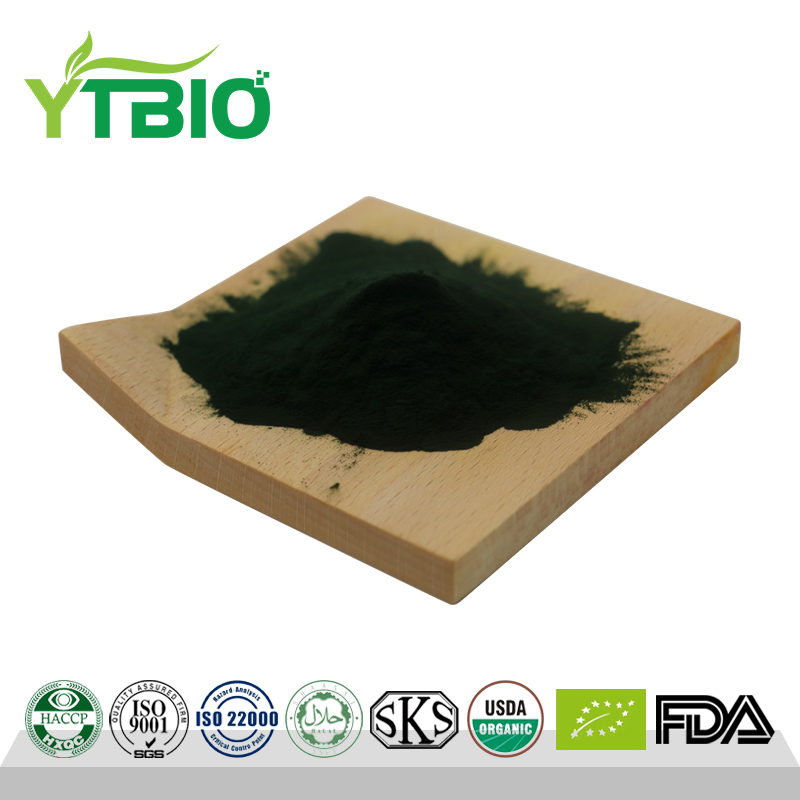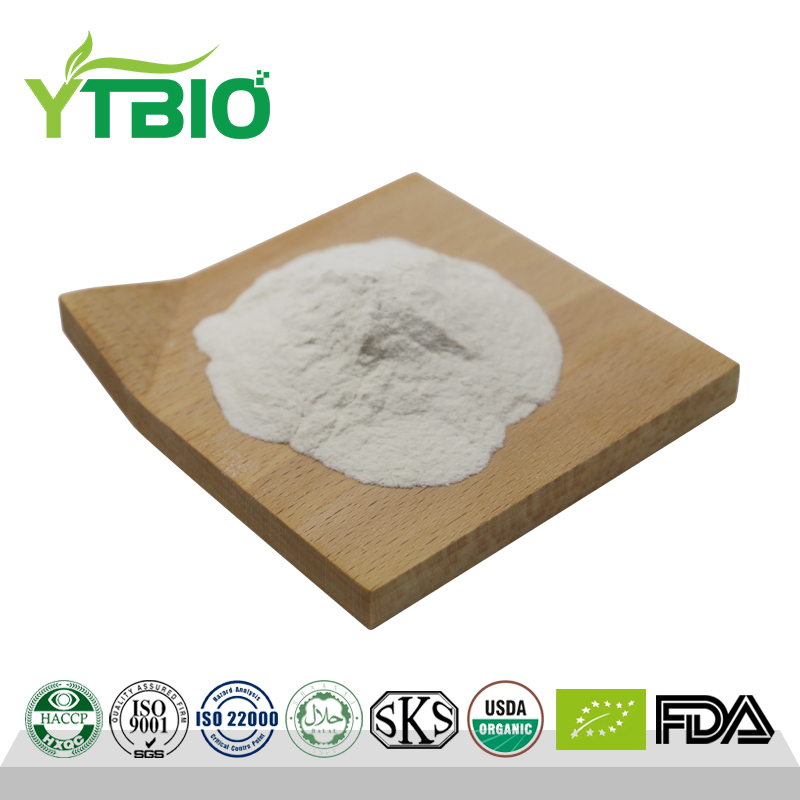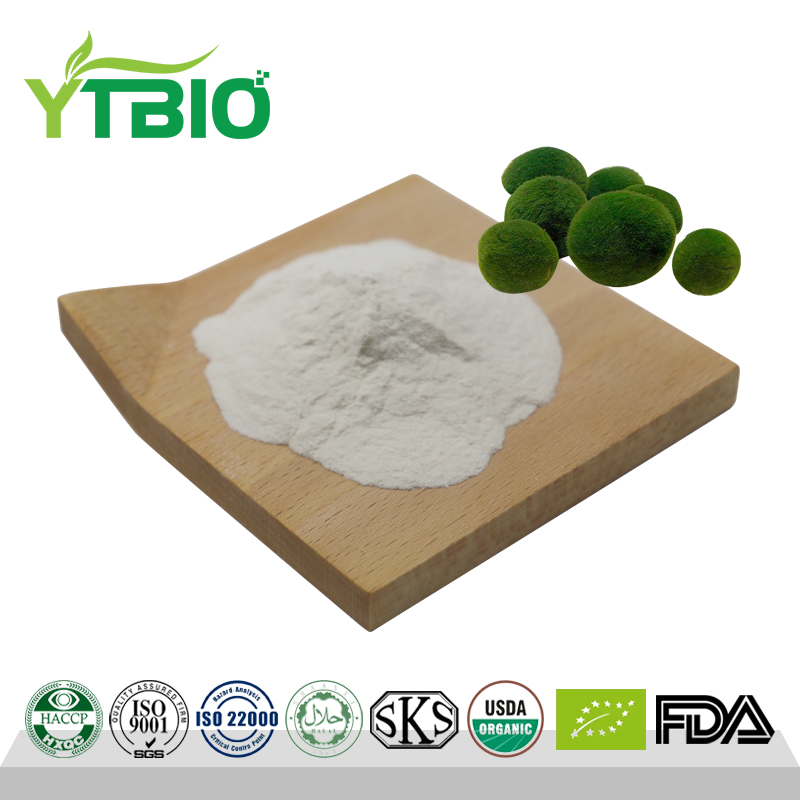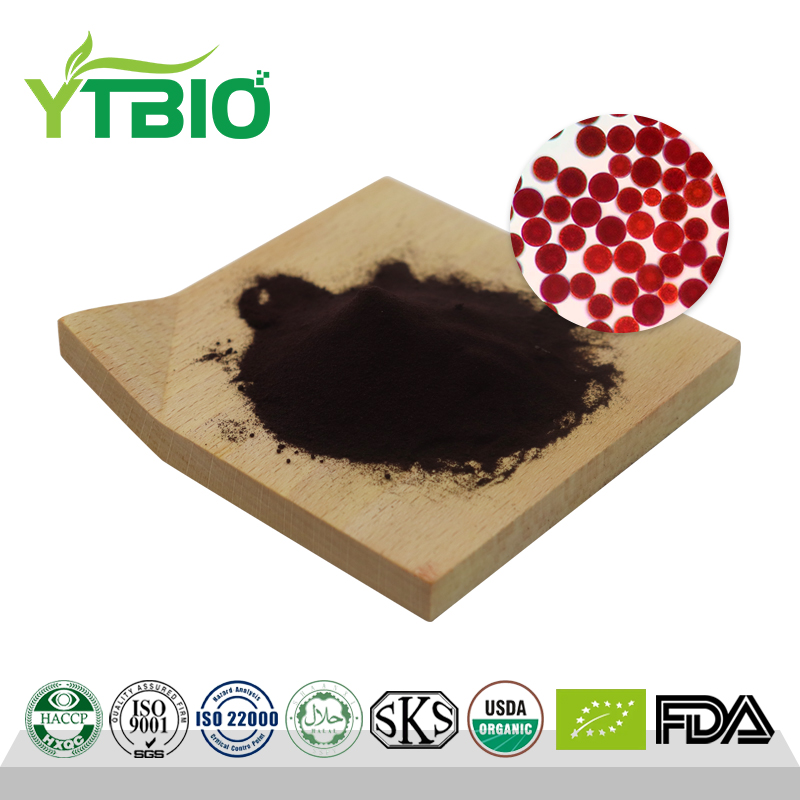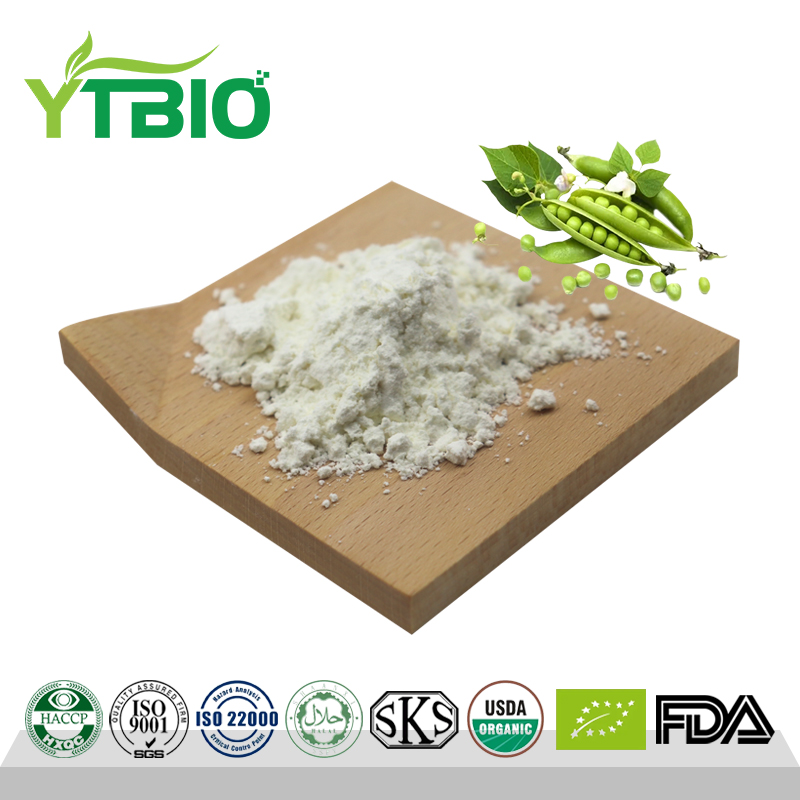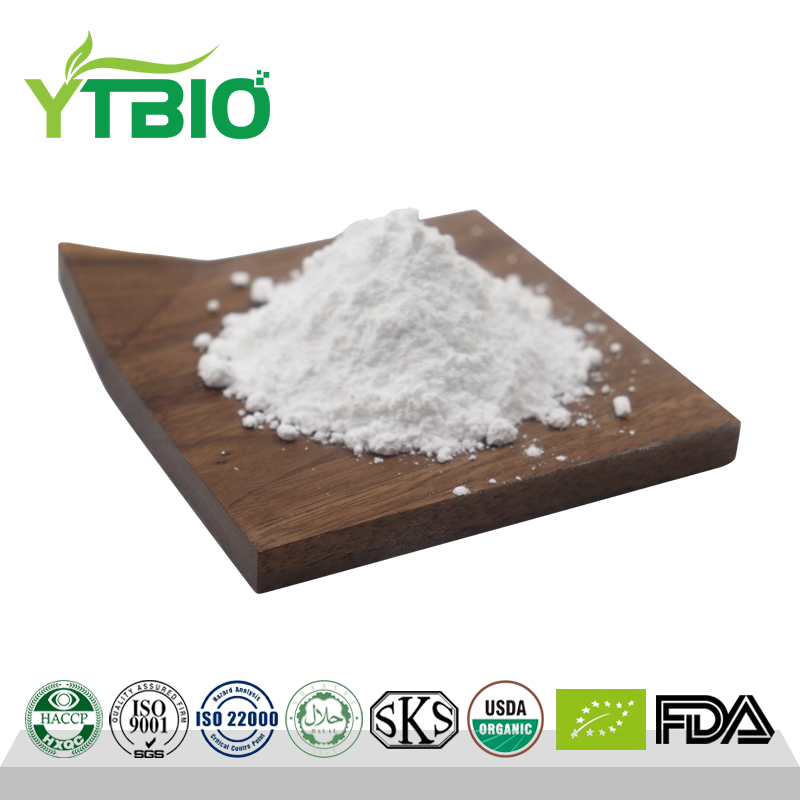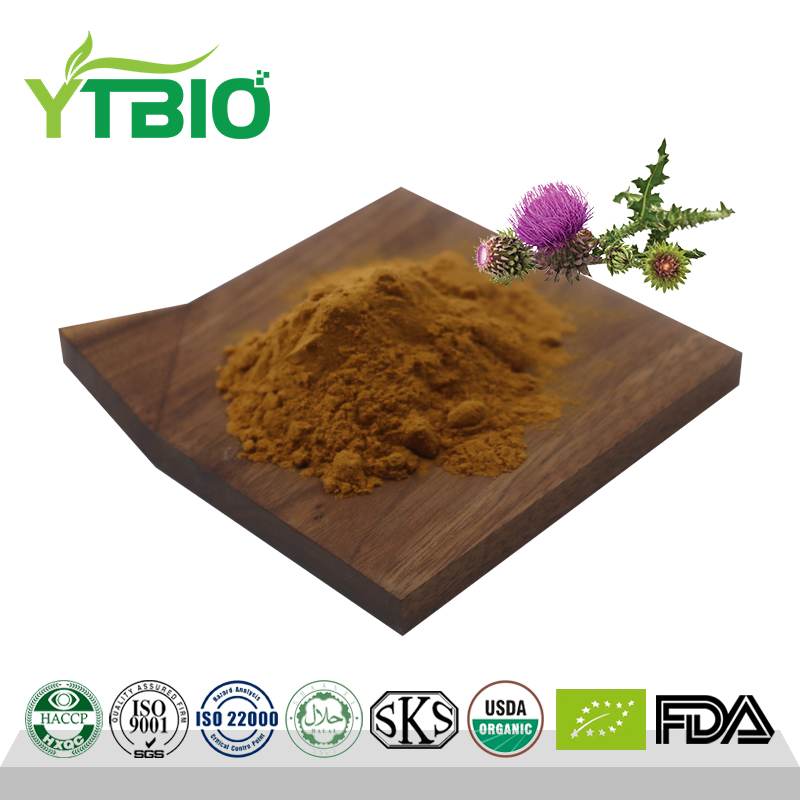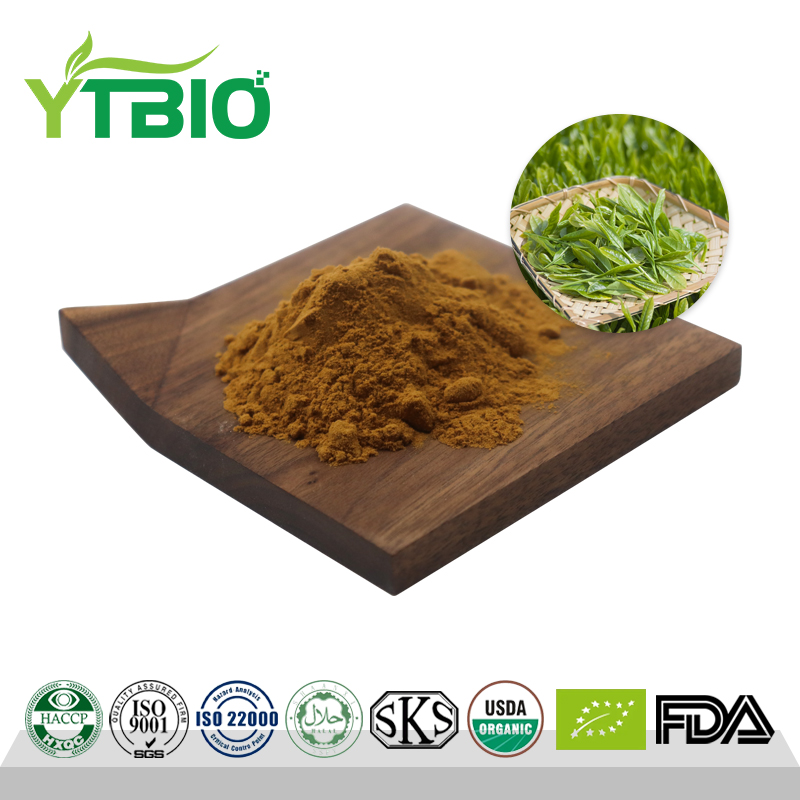Green Tea Extract Tea Polyphenol Powder
What are tea polyphenols?
Tea polyphenols have multiple active hydroxyl groups (-OH) in the molecule, which can terminate the free radical chain reaction in the human body and eliminate superoxide ions. Similar to the effect of SOD, tea polyphenols can eliminate superoxide anions and hydrogen peroxide free radicals. The rate is over 98%, showing a significant dose-effect relationship, and its effect is better than vitamins E and C; tea polyphenols have a protective effect on cell membranes and cell walls, and have a very obvious effect on eliminating lipid peroxidation free radicals.
Tea polyphenols are a type of polyhydroxy compounds contained in tea, referred to as TP. The main chemical components are catechins (flavanols), flavones and flavonols, anthocyanins, phenolic acids and depsiphenols. Complexes of acids, polymeric phenols and other compounds. These ingredients are one of the main ingredients that contribute to the color, aroma, and flavor of tea, and are also one of the main ingredients with health-care functions in tea.
Easily soluble in water, soluble in ethanol, methanol, acetone, ethyl acetate, but insoluble in chloroform.
What are the benefits
Tea polyphenols refer to the complex of catechins (flavanols), flavones and flavonols, anthocyanins, phenolic acids and depsiphenolic acid polyphenol compounds in tea. Except for phenolic acids, they all have a C6-C3-C6 basic carbon framework with 2-phenylchroman (flavan) as the main body. Among them, catechins are the main components of tea polyphenols, accounting for about Tea polyphenols account for 50% to 70% of the total amount of tea, accounting for 12% to 24% of the dry weight of tea. It is a type of compound with a relatively complex structure, including catechin, gallocatechin, and gallocatechin gallate. , catechin gallate, etc. The content of tea polyphenols in tea is generally more in green tea than in black tea, and more in summer and autumn tea than in spring tea.
The main medicinal effects of tea polyphenols are:
(1) Reduce blood lipids and inhibit atherosclerosis. Many studies have shown that drinking tea can reduce blood cholesterol levels and has obvious anti-atherosclerotic functions. This is because tea polyphenols play an important role in the body's fat metabolism, inhibit the rise in cholesterol levels in plasma and liver, and promote the excretion of lipid compounds from the feces. Therefore, it can not only prevent and treat arteries Atherosclerosis, and also has the effect of losing weight.
(2) Strengthen capillaries and lower blood sugar. Tea polyphenols can not only prevent the increase in capillary permeability caused by excess fat, but also work together with tea alkaloids to relax the blood vessel wall and increase the effective diameter, which is beneficial to the relaxation of human blood vessels and enhances the toughness of the capillary wall. Plays a role in preventing blood vessel rupture. Experiments show that catechins can also effectively lower blood sugar and reduce the risk of diabetes.
(3) Anti-radiation. Regarding the radiation protection of tea, it was first reported by Japan. They found that among survivors of the atomic bombings, those who drank tea regularly had less severe radiation sickness. A series of animal tests have shown that tea polyphenols have obvious anti-radiation effects. It is generally believed that the anti-radiation effect of tea polyphenols is related to its participation in redox reactions in the body, protecting blood phase, repairing physiological functions, and inhibiting internal bleeding. In addition, tea polyphenols can reduce DNA damage caused by radiation.
(4) Anti-aging. Peroxidation of lipids in the human body is one of the mechanisms of human aging, and free radicals are the main factor in peroxidation in the organism. Tea polyphenols have a strong free radical scavenging effect, which can play an antioxidant and anti-aging effect. Animal experiments show that tea polyphenols can inhibit the activity of lipoxygenase and lipid peroxidation in skin mitochondria.
Application direction
Applications in the food industry
1. Used as antioxidant
The antioxidant effect of tea polyphenols can be used in meat product processing, oil storage and the production of baked goods, dairy products, fried foods, and can also be used in the preparation of various beverages. When freezing fresh fish, adding tea polyphenols antioxidants can prevent the oxidation of fish body fat.
2. Used as food preservative
As a preservative, tea polyphenols can slow down the biochemical activities of fruits and vegetables after picking and delay their post-ripening period. In addition, preservatives formulated with tea polyphenols can also prevent discoloration and spoilage of various cakes, lactic acid beverages and livestock products during deep processing.
3. Used as food color preserving agent
Tea polyphenols have strong reducing properties and can prevent natural pigments (such as carotene, chlorophyll, safflower yellow, vitamin B2 and carmine, etc.) from fading due to photooxidation, and have a certain effect on the stability of pigments.
4. Used as food deodorant
Chewing gum containing tea polyphenols has 10 times more deodorizing power than ordinary chewing gum. For physiological halitosis, chewing for 3 minutes can be effective. In addition, by adding 0.1% green tea extract to wine and beverages, wine and beverages with the function of removing halitosis can be developed. Such wines and beverages also have obvious deodorizing effects on halitosis caused by methyl mercaptan and the like.

Application in daily necessities
As an excellent additive for cosmetics and daily necessities, tea polyphenols have the following significant effects: they have strong antibacterial effects and inhibit oxidases. At the same time, it can prevent the sun's rays from damaging the skin. In addition, it can also eliminate bad breath. Therefore, tea polyphenols can be used as antioxidants, preservatives, anti-wrinkle agents, skin whitening agents, radiation protection agents, sunscreen agents and special cosmetic additives in cosmetics and daily necessities, as well as in daily cosmetics such as bath and bath products. Soap, body wash, shampoo, detergent, toothpaste, tooth powder, mouthwash, anti-bad breath agent, etc., to increase the functionality of these products.
Application in medicine
Tea polyphenols have obvious preventive and therapeutic effects on the following diseases: lowering blood pressure, anticoagulation, lowering blood lipids and obesity, preventing and treating cardiovascular diseases such as arteriosclerosis and thrombosis, lowering blood sugar, preventing and treating diabetes, sterilizing and antiviral; preventing and treating gastrointestinal and respiratory tracts , influenza and other diseases; prevents and treats hepatitis, anti-aging and enhances immune function; has the effects of strengthening teeth, preventing and treating periodontitis, preventing dental caries, deodorizing and detoxifying. Tea polyphenols can be used as auxiliary medicines and raw materials for health care medicines for patients with the above diseases.



